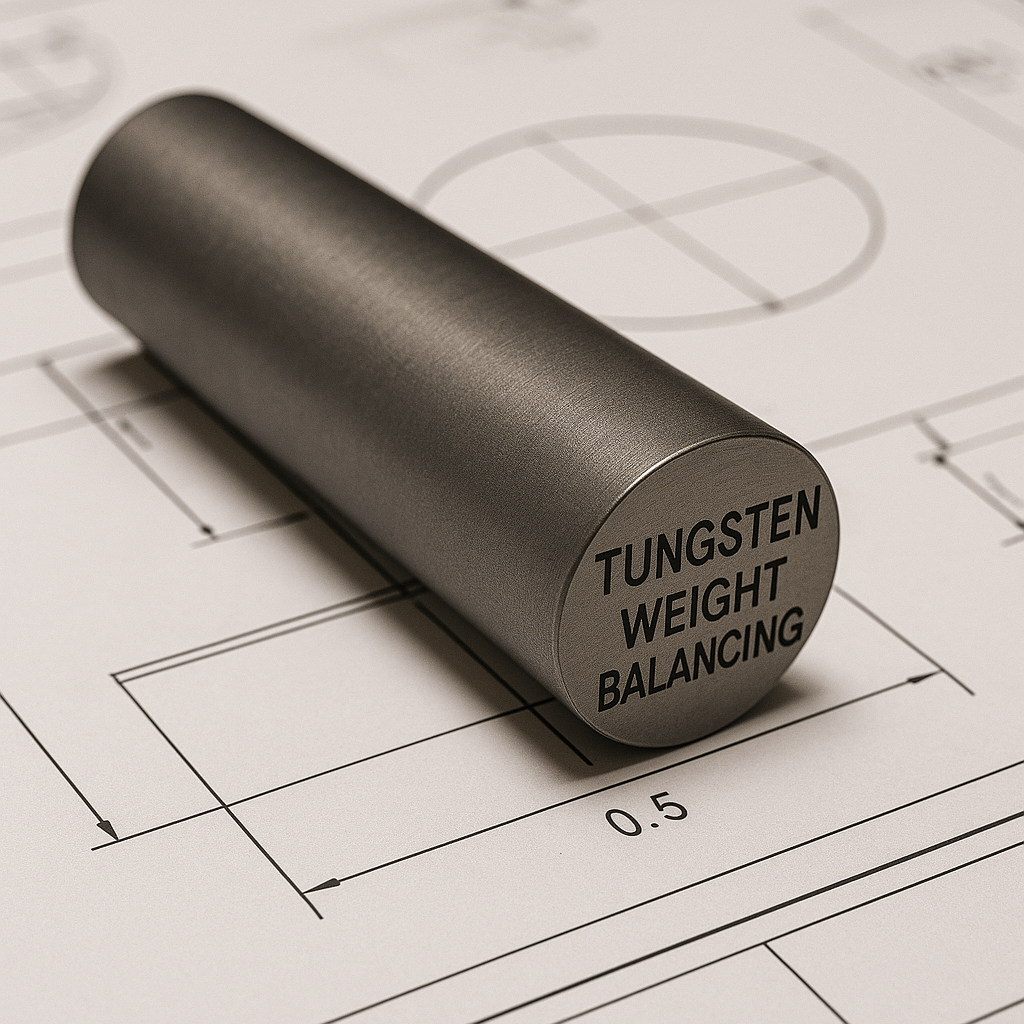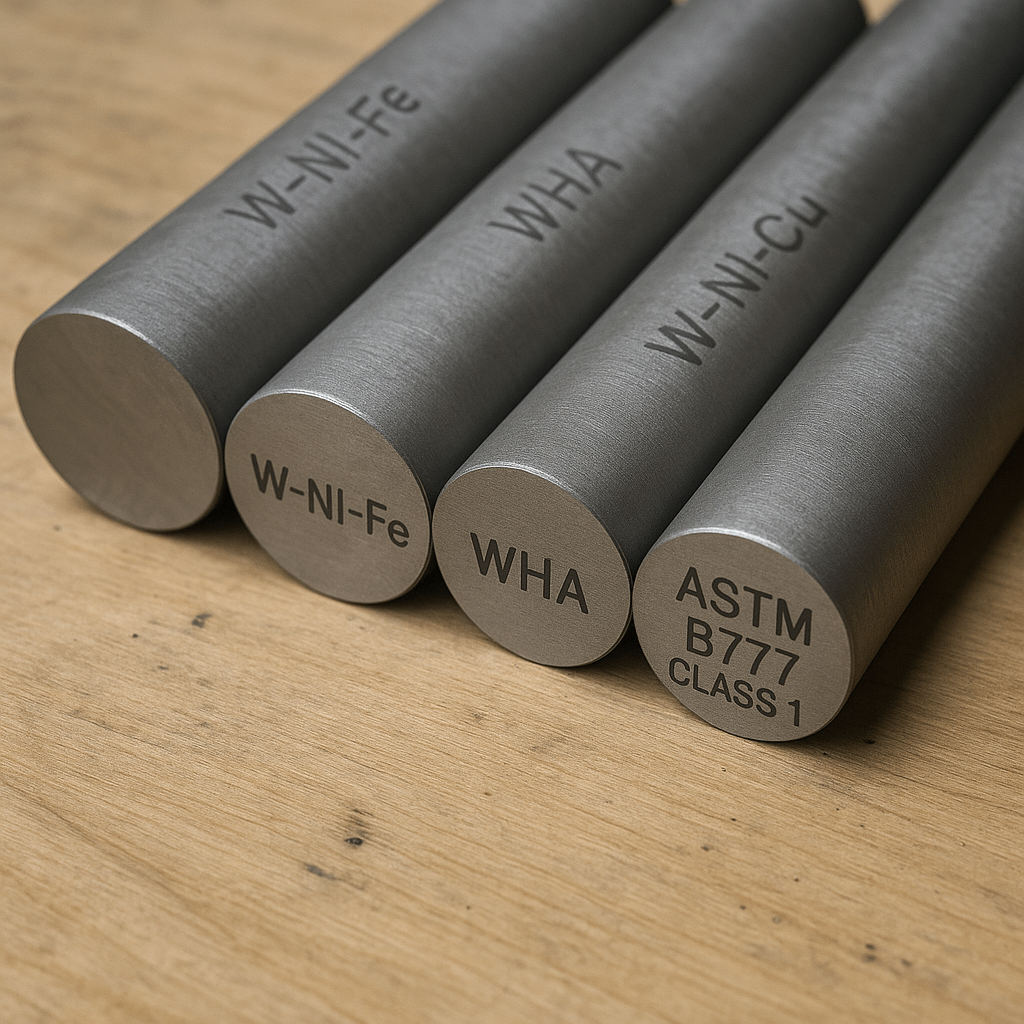In advanced materials and precision manufacturing, we constantly pursue properties that push the boundaries of what is possible—strength, thermal resistance, and corrosion resistance.
Yet one property often holds the key to solving engineering challenges: density. And when it comes to density, one element consistently stands apart in practical, high-performance applications: Tungsten.
This article explores the real-world impact of tungsten density, viewed through the lens of those who shape, machine, and transform it—the fabricators.
We examine the “what,” “why,” and especially the “how”: how this unique property unlocks performance. For engineers, designers, and procurement professionals, understanding how dense is tungsten is critical to applying it effectively.
Part 1: The First Encounter - The Deceptive Weight of a Small Cube
Imagine holding a one-inch metal cube. You’re expecting the weight of steel or aluminum.
But your wrist drops unexpectedly. The cube is far heavier than its size suggests. This is a typical first encounter with tungsten.
That one-inch cube weighs approximately 0.697 pounds (316 grams)—nearly three times heavier than a steel counterpart. This surprisingly heavy sensation becomes a direct, physical demonstration of extreme density.
For fabricators, this tactile lesson prompts immediate questions: what forces will this part generate? How will it behave in motion? This initial interaction introduces the design implications of tungsten cube weight.
Part 2: Establishing the Benchmark - How Tungsten Measures Up
To appreciate tungsten’s density, context is essential. In engineering, material selection depends on comparative performance.
A metal density chart shows tungsten’s density of 19.3 g/cm³ places it in a unique category.
| Material | Density (g/cm³) | Key Use Factor |
|---|---|---|
| Aluminum | 2.7 | Lightweight, low cost |
| Titanium | 4.5 | Strength-to-weight, aerospace |
| Steel (Stainless) | ~8.0 | Corrosion resistance, general-purpose |
| Copper | 8.96 | Electrical conductivity |
| Lead | 11.34 | Dense, toxic |
| Tungsten | 19.3 | High-density engineering applications |
| Gold | 19.32 | Precious, limited industrial use |
| Osmium | 22.59 | Denser, rare and costly |
Tungsten vs. Stainless Steel
Stainless steel is widely used and affordable, but at ~8.0 g/cm³, it offers less than half the density of tungsten. For mass-critical applications like damping or counterbalancing, tungsten clearly wins.
Titanium vs. Tungsten
Titanium is prized for low weight and high strength. Tungsten, for high weight in small form. The two serve entirely different roles, making material choice dependent solely on design goals—lightness versus mass.
Tungsten vs. Lead
Lead is dense (11.34 g/cm³), but tungsten surpasses it by ~70%. In shielding and inertia applications, tungsten offers better performance, smaller volumes, and less environmental concern.
Tungsten vs. Gold
Gold and tungsten are density twins, but otherwise dissimilar. Tungsten is harder and more thermally stable. This comparison underscores that density alone doesn’t determine material suitability.
Part 3: The Atomic Blueprint - Why Tungsten is So Dense

Tungsten’s density results from its atomic structure:
High atomic mass – Atomic number 74, atomic weight 183.84.
Lanthanide contraction – Electron shell compression makes its atoms more compact.
The result: small, heavy atoms packed tightly in a lattice. This gives tungsten extraordinary mass per unit volume.
Part 4: From Property to Performance - Where Density Creates Value

Tungsten’s density enables high-value performance in four key ways:
Kinetic Energy Applications
For projectiles or counterweights, density boosts kinetic energy. Tungsten is used in APFSDS rounds and aerospace control weights to deliver force or maintain balance in compact formats.
Radiation Shielding
Tungsten blocks X-rays and gamma rays efficiently. Its Half-Value Layer (HVL) is thinner than lead’s, enabling compact shielding in medical collimators and industrial applications.
Inertial Stabilization
In F1 ballast or machining boring bars, tungsten dampens vibration and lowers the center of gravity. This improves stability and machining precision.
Premium Product Enhancement
In luxury watches and audiophile gear, weight conveys quality. Tungsten components add value through performance and perceived refinement.
Part 5: From Raw Material to Real Product - The Fabrication View

Tungsten’s potential is unlocked through precise fabrication.
Powder Metallurgy
With a melting point of 3,422°C, tungsten can’t be cast. It’s processed via powder metallurgy: compacted powder is sintered, sometimes using Hot Isostatic Pressing (HIP) to remove porosity.
Machining Challenges
Tungsten is brittle and hard. CNC machining requires diamond tooling, low speeds, and cooling. Close collaboration in part design helps ensure manufacturability.
Choosing WHA vs. WC
WHA (Tungsten Heavy Alloy): 90–98% tungsten + binder. High density, better machinability. Follows ASTM B777.
WC (Tungsten Carbide): Less dense but extremely hard. Suited for cutting/wear tools.
WHA Grades (ASTM B777)
Class 1 & 2: For shielding, non-magnetic (e.g., MRI).
Class 3 & 4: For mechanical use—rotors, weights, etc.
Quality & Traceability
Reliable suppliers provide:
CoC (Certificate of Conformance)
Density/dimension reports
Full traceability from powder to part
These ensure consistent, spec-compliant performance.
Part 6: Your Key Questions, Answered
Q: Is tungsten the heaviest usable material?
A: Not absolutely—osmium is denser—but tungsten offers the best balance of performance, cost, and availability.
Q: Is tungsten better than lead for shielding?
A: Yes. Denser, safer, and more compact. Lead is cheaper, but bulkier and toxic.
Q: Should I use pure tungsten, WHA, or WC?
A: Pure tungsten: high heat. WHA: weight and strength. WC: hardness and wear.
Q: What info is needed for a quote?
A: Drawings, tolerances, alloy grade (e.g., ASTM B777 Class 2), quantity, and finishing requirements.
Q: How does alloy choice affect cost?
A: WHA machines faster than WC, reducing lead time and cost. Early consultation helps.
Q: What finishes are available?
A: Grinding, polishing, nickel/gold plating—depending on environment and function.
Conclusion: Density as a Design Tool
Tungsten’s density is more than a number—it’s a design lever. It enables shielding, stability, precision, and product differentiation.
To fully utilize it, you need the right material, the right design, and the right fabricator. At YISHANG, we deliver all three—turning dense metal into dense value.
Ready to build with the heaviest performer in engineering? Let’s talk tungsten.

